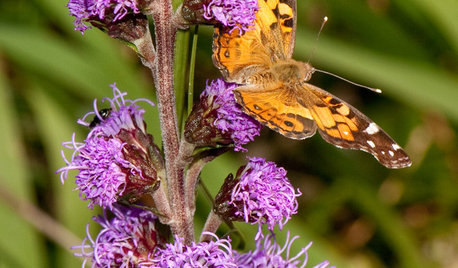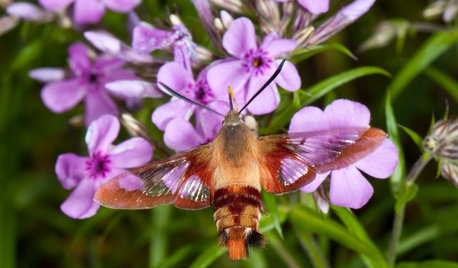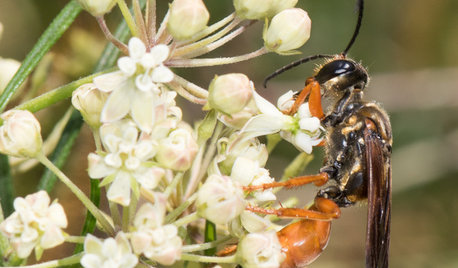name this caterpillar
tonyb416
18 years ago
Related Stories

GARDENING GUIDESAmerican Lady Butterflies Add Delight to Summer Gardens
Provide native nectar and larval host plants to welcome these migratory butterflies
Full Story
GARDENING FOR BUTTERFLIESBe a Butterfly Savior — Garden for the Monarchs
Keep hope, beauty and kindness alive in the landscape by providing a refuge for these threatened enchanters
Full Story
GARDENING FOR BUTTERFLIES7 Native Wildflowers to Make You an Awesome Butterfly Host
Offer the leaves of these and you’ll get more butterflies than with flower nectar alone
Full Story
GARDENING GUIDES6 Plants That Beat Butterfly Bush for the Wildlife Draw
It's invasive, a nonnative and a poor insect magnet. Check out these better alternatives to butterfly bush in the garden
Full Story
GARDENING GUIDESHummingbird or Moth? See Why You Want Clearwings Around
These fascinating moths may be helpful pollinators for your garden. Here’s how to coax them your way
Full Story
FLOWERS AND PLANTSHelp Monarchs and Other Butterflies by Planting Common Milkweed
Summer-blooming Asclepias syriaca is an important larval host plant for the monarch butterfly and attracts a number of pollinating insects
Full Story
GARDENING GUIDESEntice Eastern Tiger Swallowtails With Summer Flowers
Grow nectar-rich native bloomers and larval host plants for these endearing butterflies
Full Story
GARDENING GUIDESGreat Design Plant: Asclepias Verticillata
Plant whorled milkweed in dry central and eastern U.S. gardens to attract monarch butterflies and other insect pollinators
Full Story
GARDENING GUIDESGreat Design Plant: Asclepias Incarnata for a Butterfly Garden
Beautiful swamp milkweed makes it easy to help monarchs and other pollinators in eastern U.S. gardens
Full Story
GARDENING GUIDES6 Steps to Creating Your Butterfly Garden
Encourage these fanciful winged beauties to visit your garden while helping restore their fragmented habitat
Full Story







Tomato_Worm59
tonyb416Original Author
Related Professionals
Simi Valley Landscape Architects & Landscape Designers · Mount Wilson Landscape Architects & Landscape Designers · Elgin Landscape Contractors · Athens Landscape Contractors · Brookline Landscape Contractors · Brooklyn Park Landscape Contractors · Richmond Landscape Contractors · Saint George Landscape Contractors · Stony Brook Landscape Contractors · Tehachapi Landscape Contractors · Vashon Landscape Contractors · Amesbury Siding & Exteriors · San Bernardino Siding & Exteriors · St. Louis Siding & Exteriors · Thornton Siding & ExteriorsEPABLO1208
Jojan
Tomato_Worm59
CatNTree
Tomato_Worm59
CatNTree
Tomato_Worm59
CatNTree
Tomato_Worm59